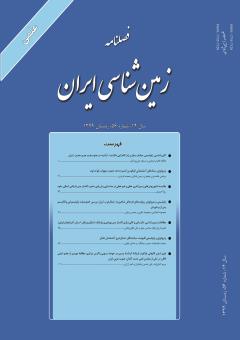مطالعات زمین¬شناسی، دگرسانی و کانی¬سازی کانسار مس پورفیری بارملک (شمال ورزقان- استان آذربایجان¬شرقی)
محورهای موضوعی :
علیرضا روان¬خواه
1
,
محسن موءید
2
![]() ,
علی لطفی¬بخش
3
,
علی لطفی¬بخش
3
1 - دانشگاه محقق اردبیلی
2 - دانشگاه تبریز
3 - دانشگاه محقق اردبیلی
کلید واژه: دم¬های ساب¬ولکانیک, توده پورفیری بارملک, غنی¬شدگی زون سوپرژن, اپی¬ترمال, ورزقان,
چکیده مقاله :
گستره اکتشافی بارملک در شمال غرب کشور، استان آذربایجان شرقی و شمالشرق شهرستان ورزقان قرار دارد. رخنمونهای شمالی منطقه شامل سنگهای ولکانیک و ولکانو ـ کلاستیک ائوسن و تودههای نفوذی کوارتز مونزونیت پورفیری الیگوسن میباشند که خود توسط دایکهای نسل اول و دوم غیر مینرالیزه قطع میشوند. در ادامه به سمت شمال، توده نفوذی با نهشتههای کربناته - فیلیشی کرتاسه فوقانی ـ پالئوسن همبری دارد. علاوه بر این تزریق دمهای سابولکانیک داسیتی و فورانهای بازالتی آلکالن پلیو ـ کواترنر نیز در منطقه انجام شده است. توده پورفیری کیقال در ادامه به سمت جنوبغرب به منطقه بارملک میرسد. دگرسانیهای گرمابی فیلیک، پروپیلیتیک و آرژیلیک در این توده شناسایی شدهاند ولی به دگرسانی پتاسیک برخورد نشده است و این مسئله نشان میدهد که توده بارملک پورفیری، توده مستقلی نبوده و حاشیه توده پورفیری کیقال محسوب میشود. بافت غالب در توده پورفیری، پورفیریک با خمیره ریزبلور است و کانیسازی به فرم افشان، رگه ـ رگچهای و پرکننده سطوح درزه و شامل کالکوپیریت، گالن، اسفالریت و پیریت رخ داده است. میزان پیریت در این توده کم بوده و یکی از دلایل عدم غنیشدگی زون سوپرژن همین مسئله است. با توجه به مشاهده کانیسازی سرب و روی اغلب به فرم رگه-رگچه ای در دایکهای کوارتزدیوریتی نسل اول (DK1) و با عنایت به اینکه تزریق این دایکها در سونگون بعد کانی سازی بوده است، میتوان کانیسازی سرب و روی را به فرآیندهای اپیترمالی توده نفوذی بارملک نسبت داد که بعد از تزریق دایکهای کوارتزدیوریتی نسل اول رخ داده است.
Exploration area of Barmolk is located in the northwest of the country, East Azarbaijan province and northeast of the Varzeghan county. Northern outcrops of the area consist of Eocene volcanic and volcanoclastic rocks and Oligocene porphyry quartzmonzonite intrusion bodies, which are cut off by first and second generation non-mineralized dikes. Towards to the north, this mass is in contact with upper Cretaceous-Paleocene carbonate-flysch deposits. In addition, Plio-Quaternary injection of dacite subvolcanic domes and eruption of alkaline basalt in the studied area have taken place. Kighal porphyry extends to the southwest of Barmolk area. Phyllic, propylitic and argillic hydrothermal alterations were identified in this mass, but potassic alteration was not observed. This indicates that the Barmolk porphyry is not an independent mass and is the margin of Kighal porphyry mass. The main texture in this mass is porphyritic with fine-graind matrix. Mineralization appears to be disseminated, vein-veinlet and fracture surface filling including chalcopyrite, galena, sphalerite and pyrite. Pyrite content in this mass is low, and this is one of the reasons for the lack of supergene enrichment zone. Due to the presence of lead and zinc mineralization mostly in the form of vein-veinlet in the first-generation quartzdiorite dikes (DK1) and with regards to the injection of these dikes into Sungun after supergene zone formation, the mineralization of lead and zinc can be attributed to the epithermal processes, related to the Barmolk intrusive mass. Consequently, the latter mineralization occurred after the injection of first-generation quartzdiorite dikes.
